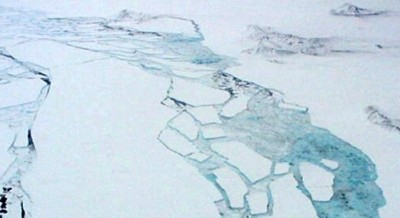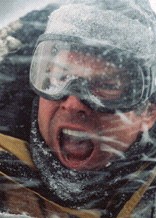|
|
 |
An ice shelf breaks off ...
It is the 31st of January 2002 - in Antarctica an ice volume of the size of Luxembourg breaks off from the continent.
When we have winter in the northern hemisphere, it is summer in the southern hemisphere. In the Antarctic summer of 2002 (February / March), a giant part of ice shelf (the so called Larsen shelf) detached itself from the headline making continent. A 3200 km2 mass of ice (Luxembourg = 2590 km2) began drifting in huge and smaller icebergs towards the open sea. The film begins with this event, which has been taken from reality. Shelf ice is ice, which floats on the water. The ice masses, of the shelf ice, are supplied from the glaciers behind them, which are located on the solid ground of the Antarctic continent. Shelf ice is continuously formed from the flow of these glaciers and from local precipitation and stabilises the glaciers like a barrier. Due to the sudden break off of the ice from the Larson shelf, the supplying glaciers are now flowing more quickly.
|
 |  | Antarctic reality: in summer 2002 a huge ice disc is detaching from the continent, the so called Larsen B shelf.
Photo: Pedro Skvarca, Instituto Antártico Argentino, 13 March 2002
|
|  |  |  | only in the film:
Jack Hall has been there
© 20th Century Fox
|
|
| |  | |
|
Melting water runs into and erodes the clefts in the ice and they become deeper. Eventually this leads to the break off of the shelf. How could this happen? In this part of Antarctica a regional warming has been observed, which is unusually high compared to the average warming of the Earth. But we have to be careful in regarding this as a sign of climate change, because the reasons behind this are not yet well understood.
|
|
In the film, Prof. Hall narrowly escapes the cracking ice. After that the scene changes. It shifts to the North pole ...
|
 |
Next page |
In an eerie example of life imitating art, the Larsen B ice shelf in Antarctica fell into the sea in March 2002, a few weeks after Emmerich and Nachmanoff had written the scene describing its collapse. "At that time we joked that we had better start shooting soon or we’d be making a documentary", says Emmerich. |
|
 |
|







